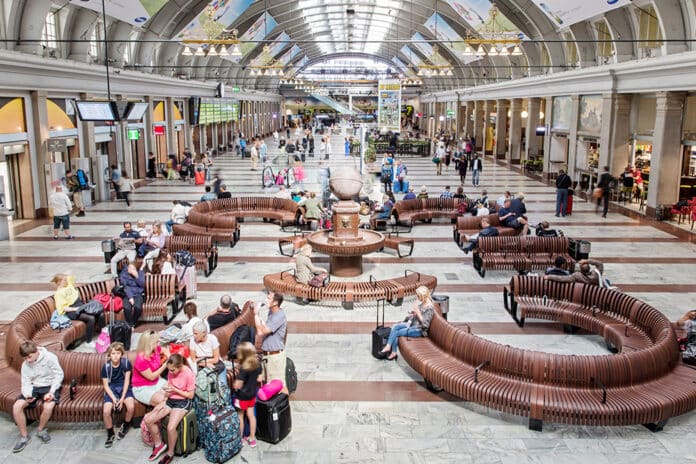The qualities offered by modularity in furniture in transport hubs are increasingly in demand, especially with today’s unique challenges around social distancing and hygiene under COVID-19.
Green Furniture Concept is leading the way transforming UK railway stations by designing comfortable furniture for waiting areas in keeping with the locations they serve.
Adele Kamel, Head of Global Marketing at Green Furniture Concept, believes modularity is the key to modern placemaking and that the company’s emphasis on this is why its design and work is being chosen in the UK and beyond.
“Some of the benefits of modular furniture are immediately obvious, to do with adaptability and agility of use, while some are long term, based on sustainability and the life cycle of a piece of furniture,” she said.
“We also need to think about the ever-changing use of spaces in society, the movement of people around spaces, and the role of furniture in placemaking.
“The railways were once the centre of activity, a great and exciting place to be and where people wanted to spend both time and money. With our furniture we are bringing that excitement back, helping to create more commercial centres and community hubs.”

Green Furniture Concept know priorities are different for every context of public furniture and works to help find the ideal solution for a particular need as an architect or designer.
Such has been the success, that you can find its furniture in London Victoria and London Bridge stations, as well as further afield in Germany, France, Morocco, Austria and Italy. Although bespoke, each has the same outcome of helping to increase passenger satisfaction and retail spend.
Adele said: “Our easy-to-use furniture concept is a placemaking one: it respects the unique character and history of each place that we work with. We understand the extraordinary pressures on public spaces during (and after) the pandemic and the need to be flexible and ready to respond quickly to change.
“A bit like Lego for architects, modular furniture offers endless possibilities. It can be built and put together in a variety of ways, adding or removing units at key points to change the form and/or function.
“Demands on public spaces are evolving all the time and there’s an increasing trend for spaces to be multi-use, seasonally programmable and collaborative. Architects and interior designers have to be able to reconfigure furniture quickly and efficiently for different contexts – and of course it is more affordable than replacing the whole system.”
With its ability to be configured in different ways, to be broken up and moved, or to be put together using spacers, Adele says that modular furniture has a huge advantage over traditional public furniture for social distancing during a pandemic.
“These safety considerations will remain relevant in any situation where visitor numbers or gatherings need to be controlled,” she said. “By using planters, panels or colour bands of ribs, space is created between seats.
“Parts are accessible for deep cleaning and extra ribs are included for instant repair to maintain hygiene.
“Modularity also presents us with enormous potential for sustainability. When pieces are made to a timeless design and easily repurposed over their lifetime, with worn or damaged units individually repairable or replaceable, companies can invest on environmental terms as well as economic ones. Saving on furniture costs is huge, as is the saving on waste for the planet.”

Photo credit: Green Furniture Concept







































 0113 2082620
0113 2082620 info@railbusinessdaily.com
info@railbusinessdaily.com 15 Mariner Court, Wakefield WF4 3FL
15 Mariner Court, Wakefield WF4 3FL

